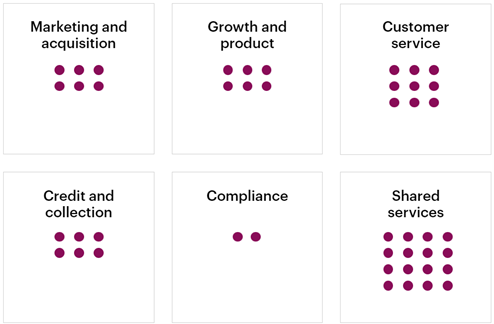Banking Meets AI
23rd August 2023
“A bank’s size and complexity is the core problem that needs to be solved.”
– US Acting Comptroller of the Currency Michael Hsu
Generative AI burst into the public imagination in 2022. But, behind the scenes, banks and financial institutions have been hard at work experimenting with generative AI for many years, according to IBM’s VP of AI Product Management, Jay Limburn.
While questions remain about bias, ethics, and the perennial problem of security with new technologies, for banks the key issue may be the still-evolving response from regulators.
That said, banks are continuing to forge ahead with generative AI, including Australian banks such as ANZ and National Australia Bank.
ANZ, for example, has built a ChatGPT-powered generative AI chatbot named Z-GPT. The bank is testing Z-GPT internally, with employees able to ask natural language questions, including, for example, what interest rate should a particular borrower need to pay on X home loan based on the borrower’s deposit. The chatbot draws on both the Large Language Model (LLM) technology behind ChatGPT and ANZ’s own massive datasets to spit out the correct response.
‘Correct’ responses may not always be that, however, and this is a major challenge for many organisations. ‘Hallucinations’ – the tendency of generative AI to make things up sometimes – is a conundrum that AI experts are battling to better understand and minimise.
But for banks and other financial institutions, where even a slight error can cascade into grave consequences, AI hallucinations may be a deal-breaker in some areas.
| Generative AI Hallucinations Generative AI tools may produce “hallucinations”—erroneous responses that seem credible. One reason hallucinations occur is when a user requests information not in the training data. Additionally, a user could use AI to purposefully and quickly create inaccurate or misleading text, thus enabling the spread of disinformation. For example, generative AI can create phishing e-mails or fake but realistic social media posts with misleading information. Further, bias in the training data can amplify the potential for harm caused by generative AI output. Source: U.S. Government Accountability Office |
Despite the teething problems with generative AI, financial services leaders such as Citi CEO Jane Fraser believe that the industry simply has to engage with the technology and work towards adopting AI. “In the near term, generative AI will drastically improve productivity. Over the long term, it has the potential to revolutionize all functions across our bank and the industry — changing how we write code, onboard clients, service customers, detect fraud, develop market research and strengthen compliance and controls,” Fraser said in a LinkedIn post in July this year.

Use cases with the highest potential in the banking sector. (Source: Bain & Company)
The tempered enthusiasm of financial industry giants like Citi, ANZ, and NAB for generative AI comes with an important caveat: the need for appropriate regulation to curtail the looming risk of misuse, deliberate or inadvertent.
But things are beginning to move on the regulatory front as governments around the world get the message. Just a few days ago, Bloomberg reported that financial powerhouse UK, as well as the world’s second-biggest economy, China, are stepping up their plans to regulate AI. This report comes close on the heels of a warning from Nikhil Rathi, the head of the powerful UK Financial Conduct Authority, that the financial sector must do more to combat AI-powered “cyber fraud, cyber-attacks and identity fraud, [which are] increasing in scale and sophistication and effectiveness.”
The message that we are getting from both industry and government is getting clearer: generative AI is here to stay, it will make deep inroads into banking and finance, and governments are unlikely to be caught napping about the potential dangers of the rise of AI.
At MyTreasur-e, we keenly track technical, social, economic, and financial trends that can impact our customers. Our passion for anticipating and managing risk in all its forms is what accounts for our customers’ satisfaction with our cutting-edge treasury and risk management solution.

